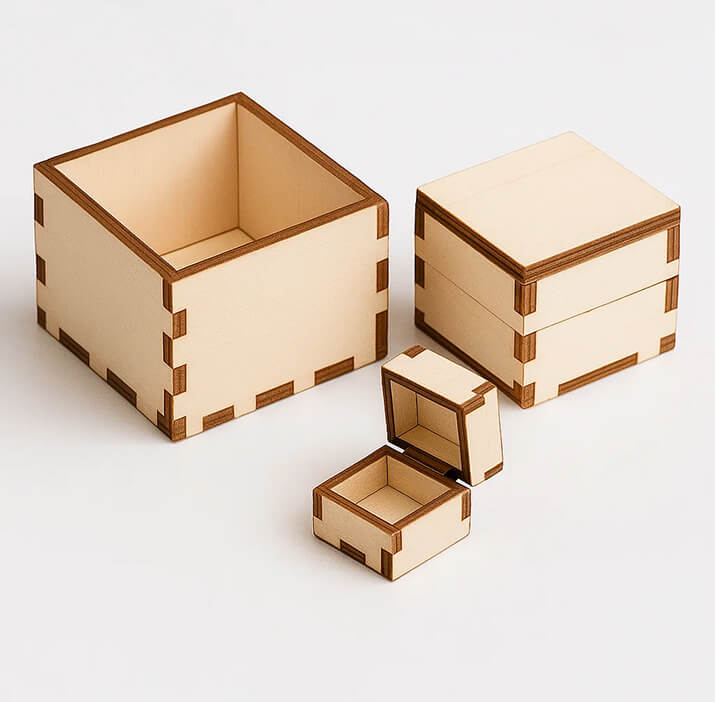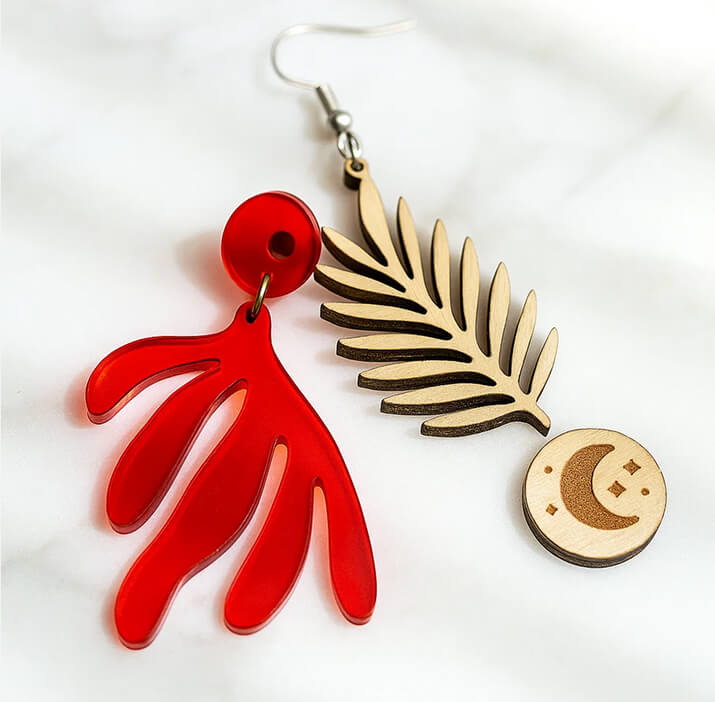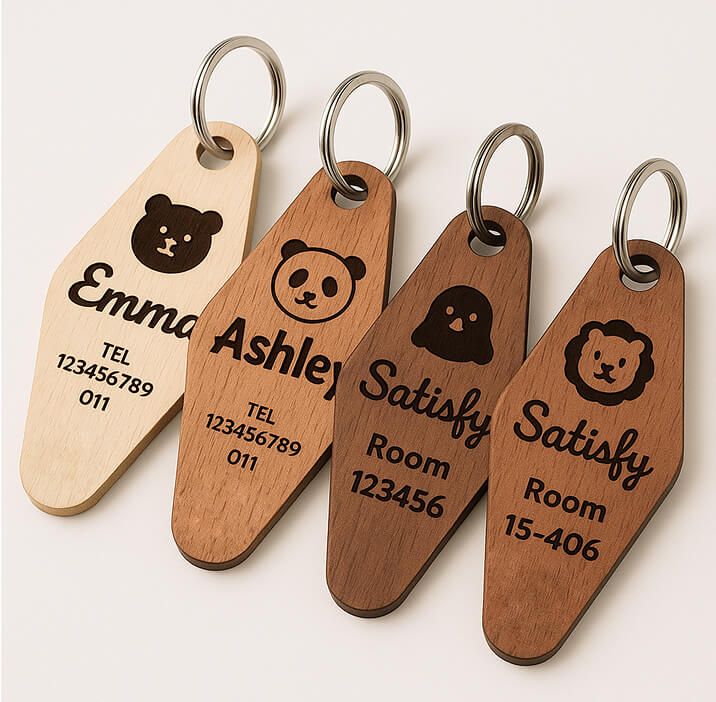![[Laser cut and engrave] Vintage Movie Projector](https://image-res.xtool.com/ali-res/community/making/12500103-b52b-4cd3-bd31-9d2fe20a0161/DSCN5145.JPG?x-oss-process=image/resize,w_1200,h_900,limit_0/interlace,1/format,webp/auto-orient,1)
Vintage Movie Projector

Information
Many years ago I produced two faux movie projectors from wood to be used as spotlights in a Las Vegas entertainer's home theater. They stood about 20 inches tall. This project is based upon those projectors, scaled down considerably to facilitate producing them with my laser equipment. It measures about 6 inches tall, 4 inches wide, and 2.75 inches deep.
Getting decent pictures of this project has proved a bit challenging. Between different lighting conditions, camera settings, size of components, etc., I've tried my best to get good pictures and I hope you'll forgive my shortcomings with this.
Instruction
Step1: Paint wood panels - Colors: Silver, Gold, Dark Gray
Both sides of the basswood squares are painted and allowed to dry before processing on the laser. The gold and silver paints are a metallic brand paint and the dark gray is a hammered finish paint. I make sure to have extra blanks painted and ready in the event I need them.
Step2: Engrave and Cut the Projector Body Components
For the MOVE TIME text, I use LB's sub-layer feature. Text is first FILLED at 27% power/800mm/min/200 dpi. Sub-layer draws LINE around the text-1500mm/min-35% power.
Two Steps are used for the Floral border: Floral pattern is set to FILL @ 1500mm/min, 25% power. Line engrave is set to 800mm/min, 23% power.
Access Panel: LINE setting @ 1100mm/min, 40% power.
When the decorative elements are complete, all pieces are CUT at 375mm/min, 100% power, 1 pass.
Step3: Assemble the Projector Body
To avoid unsightly glue residue on the Projector Body, the pieces are dry-fitted together leaving the top piece off. Rubber bands are used to hold the pieces securely together for gluing.
Two drops of thick Gorilla Glue are applied at the top of each inside corner and gravity causes the bead of glue to travel down the corner to the bottom. A small pool of glue accumulates at the bottom which secures the bottom piece to the Projector Body.
When the glue has cured, the two swivel pieces are glued into the slots in the bottom of the Projector Body with wood glue.
For the top piece of the Projector Body, the Silver handle is glued to the piece and then the top is glued to the Projector Body, both using wood glue.
For the projector Lens, two 6mm rounds and one 7mm round are assembled onto a piece of dowel and then painted silver. The Lens assembly is then glued to the Projector Body using wood glue.
Step4: Cut/Engrave the Base Components & Apply/Cut Felt to Bottom
The base consists of three components, two base profile pieces of Basswood and adhesive felt applied to the bottom.
On the top panel, two lines are engraved following the contour of the piece. This is produced by using the Offset Shapes function in LB. The LINE is engraved at 2000mm/min, 65% power. The slots and profile of the piece are then CUT at 375mm/min, 100% power.
The profile for the bottom piece uses a copy of the top piece and then the Offset Shapes function is used to create a 3mm increase in all directions of the profile. This produces a stepped appearance when the base is assembled. As with the top piece, this component is CUT at 375mm/min, 100% power.
Once the bottom piece is cut, adhesive felt is applied to the bottom of the piece. The felt is cut oversize and the laser is used to trim the felt to the exact contour of the piece.
When the bottom piece is cut, I use the MOVE function to position the laser head away from the work area. Without disturbing the position of the panel, the component is carefully removed, adhesive felt applied, and the piece repositioned onto the laser bed in its original position with the felt facing up.
The laser head is repositioned back into its original position, again using the MOVE function. The laser settings are now set to CUT at 1600mm/min, 85% power, 1 pass. This trims the felt perfectly to the component.
Step5: Cut Remaining Components
The remaining components for the projector are grouped by desired color and to fit the size blanks being used and then each group is assigned its own Layer. To assist in the grouping, a TOOL layer is used and is a simple box, sized the same as the wood blanks: in this case 100mm square. The front left corner of the TOOL layer is set to be the origin and components are grouped to fit within the TOOL layer box.
The remaining groups are then cut from the painted panels using 375mm/min, 100% power, and 1 pass.
Two of the Motor components include engraved lines. The silver outer piece is engraved with ovals to mimic air vents. The middle Motor piece is engraved with four 1mm circles to mimic screw heads. Both engravings are 1400 mm/min, 50% power, and 1 pass.
Step6: Assemble the Movie Reels, Film Guides, and Motor Components
All of these components are assembled onto 1/8" (3mm) wood dowels. The dowels are left long on the backside so once positioned they can be trimmed with flush-cutting tool.
From front to back, the Movie Reels consist of an 8mm silver ring, a 45mm Gray reel piece, two 8.6mm round spacers, another Gray 45mm reel piece, and finally an 8mm spacer.
The Film Guides (4) are assembled onto dowels in the same fashion as the Reels. All the pieces are Silver. From front to back there is a 5.7mm round, a 7.7mm round, 2 5.7mm spacers, another 7.7mm round, and finally a 5.7mm round.
The Motor consists of 6.7mm Gray round, a 16.7mm Silver round (with vent engraving), a 22.7 Gray round (with screw engravings), and a 26.7mm Gray round.
Step7: Assemble the Movie Reels and Film Guides to the Support Arms
Each Movie Reel and Film Guide are positioned onto the Support piece. The dowels for the four Film Guides are trimmed flush and then a drop of superglue is applied to each dowel on the backside of the Support.
The dowels for the Movie Reels are left untrimmed and they are not glued at this point. This will be done after the cloth strip (faux movie film) is secured to the Movie Reels and routed thru the Film Guides.
Step8: Add the Film Strip to the Reels
The Film Strip is a piece of speaker cloth 5mm wide and about 12 inches long. This is cut by the laser at 1500mm/min, 80% power, 1 pass.
A drop of glue is placed on each interior spacer of the Movie Reels. The ends of the cloth strip are then placed onto the glue and allowed to dry.
With the cloth secured to the Reels, the strip is routed thru the Film Guides and then each Movie Reel is rotated to take up the slack until the strip is taught from Reel to Reel.
The dowels are then trimmed flush on the backside and superglue applied to the dowels to fix their position.
Step9: Assemble the Base Components
The Base is designed with swivel components to provide the ability to tilt the projector with respect to the base. The swivel consists of three swivel pieces mounted to the Base and two swivel pieces mounted to the bottom of the Projector.
On the top piece of the Base, the three swivel components are inserted into the slots. Wood glue is then applied to the underside of the top piece. The bottom piece is then secured to the top piece and clamped.
The Base is now complete with a Gold top with engraved lines and Silver swivel and the stepped Silver base component with protective felt on the bottom.
Step10: Secure Movie Projector to Base
A machine screw and nut are used to the secure the Projector Body to the Base. The screw is #4-40 x 5/8". The head of the screw is beveled so a corresponding bevel is cut into the front side of the Base Swivel piece. This allows the screw head to sit flush with the mount.
The Projector is then tilted to the desired angle and the nut secured.
At this point, I can say its DONE!. At least for the Movie Projector. A bit more to note here for the project.
Step11: Tools and Adhesives
I'm often surprised at how many small hand tools end up on my workbench when assembling laser projects. I've included this pic to highlight some of those tools that are used constantly.
For beveling tabs to be inserted into slots, I use a strip of sandpaper glued to a wood strip. It's similar to an emery board used on fingernails but it's a bit stiffer and, IMO, works better. However and emery board functions quite well and should be in your arsenal of tools.
Then there are the ever-present tools: screwdrivers, tweezers, small mallet, pliers, flush cutting side cutter, razor knife, electronics pick, clamps, rubber bands, etc. I find all of these items useful at some time or another.
Adhesives is another category. Each seems to have its pros and cons. For example, superglue for wood is really convenient. It dries fast, is strong, and wicks along joints very well. However, it wicks so well that sometimes it will stain the surrounding wood and a clean appearance is lost.
Yellow wood glue and white glue are used often. They both dry clear and clean up well immediately after application. I'm often able to clean up small areas of ooze with using an electronics pick with a curved tip, very similar to a dental tool.
Thick Gorilla Glue and similar products are probably the strongest bonding adhesives. I use this glue when I need to be sure that there is sufficient strength so that the pieces never separate. The only downside to this type of glue is that they need at least a couple of hours to partially set and 24 hours to cure. Not the glue to go to when time is not on your side.
Step12: Final Thougts
First, I hope you've enjoyed viewing my Movie Projector project. The documentation is as equally challenging as it is to creating a finished project.
Next, I've included a LB project file along with the other project files. I've tried to be thorough with my settings so that anyone attempting this project with another software can do so without too much headache.
Years ago I purchased LB when I got my first laser. Over the years I have learned many of the ins and outs of LB and, frankly, it can be a steep learning curve. When asked by some why I don't use Creative Space, it's NOT because of software despair. It's due to the fact that I have years behind me of using LB and I really don't have the time or inclination to learn the intacasies of another laser software.
Lastly, thank you XTool for this opportunity to showcase a project. I have several laser machines and XTool is my goto equipment. Now, please send me a new 40 watt laser upgrade for my D1 Pro!




